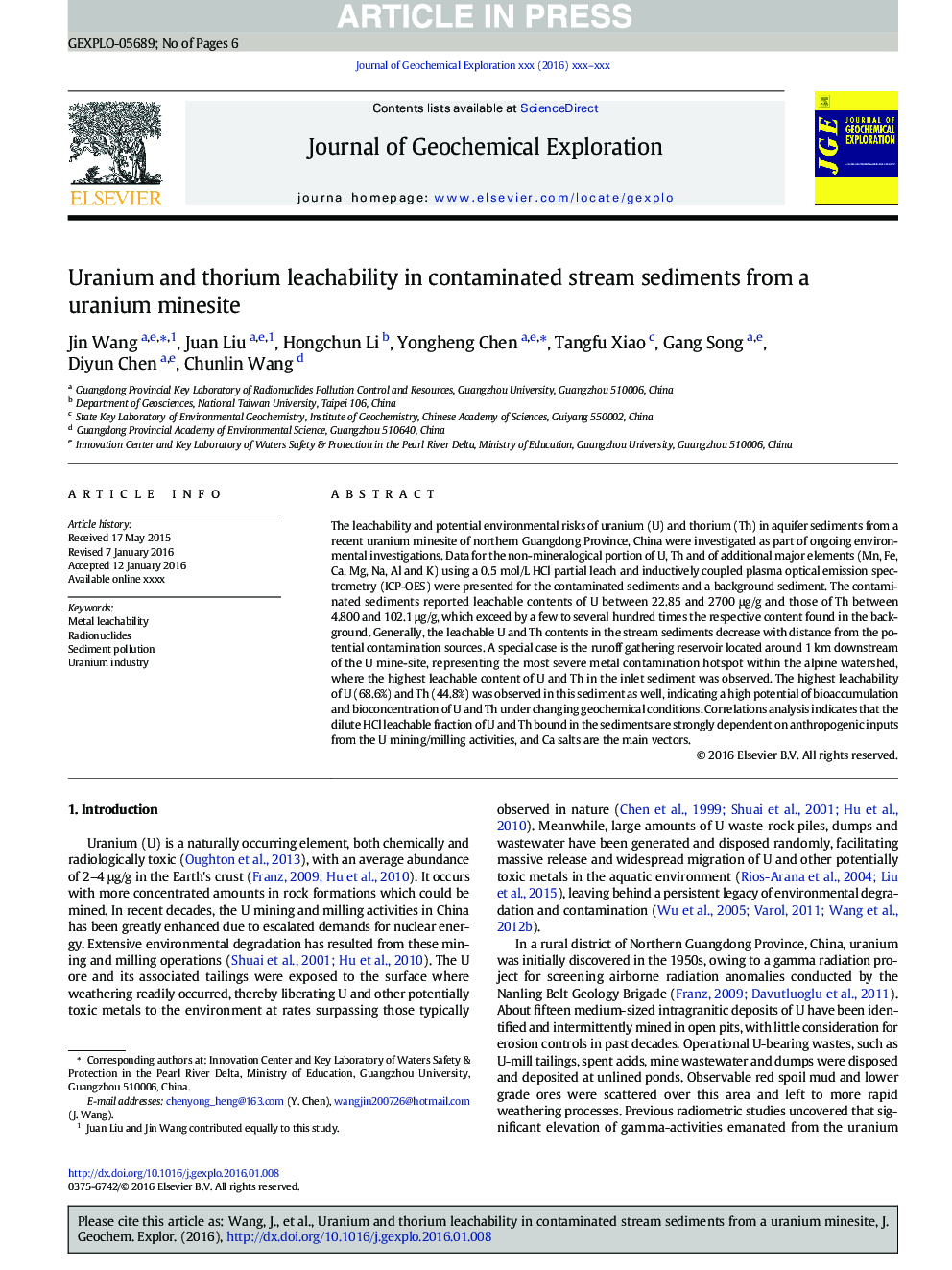| Article ID | Journal | Published Year | Pages | File Type |
|---|---|---|---|---|
| 5754457 | Journal of Geochemical Exploration | 2017 | 6 Pages |
Abstract
The leachability and potential environmental risks of uranium (U) and thorium (Th) in aquifer sediments from a recent uranium minesite of northern Guangdong Province, China were investigated as part of ongoing environmental investigations. Data for the non-mineralogical portion of U, Th and of additional major elements (Mn, Fe, Ca, Mg, Na, Al and K) using a 0.5 mol/L HCl partial leach and inductively coupled plasma optical emission spectrometry (ICP-OES) were presented for the contaminated sediments and a background sediment. The contaminated sediments reported leachable contents of U between 22.85 and 2700 μg/g and those of Th between 4.800 and 102.1 μg/g, which exceed by a few to several hundred times the respective content found in the background. Generally, the leachable U and Th contents in the stream sediments decrease with distance from the potential contamination sources. A special case is the runoff gathering reservoir located around 1 km downstream of the U mine-site, representing the most severe metal contamination hotspot within the alpine watershed, where the highest leachable content of U and Th in the inlet sediment was observed. The highest leachability of U (68.6%) and Th (44.8%) was observed in this sediment as well, indicating a high potential of bioaccumulation and bioconcentration of U and Th under changing geochemical conditions. Correlations analysis indicates that the dilute HCl leachable fraction of U and Th bound in the sediments are strongly dependent on anthropogenic inputs from the U mining/milling activities, and Ca salts are the main vectors.
Related Topics
Physical Sciences and Engineering
Earth and Planetary Sciences
Economic Geology
Authors
Jin Wang, Juan Liu, Hongchun Li, Yongheng Chen, Tangfu Xiao, Gang Song, Diyun Chen, Chunlin Wang,
